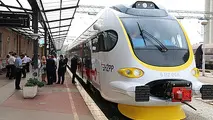Britain’s regulator has launched an inquiry into the major disruption to train services on the Northern and Thameslink networks following the introduction of a new timetable on May 20. David Briginshaw reports.
MAY 20 should have been the culmination of the £7bn Thameslink investment programme with the start of the first phase of a huge expansion of services on the cross-London network, and a radical recast of the timetable in northern England following the completion of infrastructure upgrades. Unfortunately this was not the case, with both Thameslink and Northern cancelling large numbers of services with delays to many more.

MAY 20 should have been the culmination of the £7bn Thameslink investment programme with the start of the first phase of a huge expansion of services on the cross-London network, and a radical recast of the timetable in northern England following the completion of infrastructure upgrades. Unfortunately this was not the case, with both Thameslink and Northern cancelling large numbers of services with delays to many more.
The new Thameslink timetable heralded a 13% increase in the number of daily trains, the incorporation of services from Peterborough, Cambridge, Horsham, Orpington, East Grinstead and Rainham into the original Bedford - Wimbledon/ Brighton cross-London Thameslink route, and the retiming of most services on the wider Govia Thameslink Railway (GTR) network.
GTR, which also operates Great Northern, Southern and Gatwick Express services, says despite weeks of preparation, many trains and drivers were in the wrong location, resulting in services being cancelled.
GTR says it has taken delivery of all 55 class 700 dual-voltage EMUs from Siemens for the Thameslink network and has completed driving training, but the logistics of correctly positioning all the drivers and trains overnight proved too much. The new GTR timetable calls for the operation of an additional 435 trains per day with around 3900 services running daily, but GTR is only able to run 180 of the extra trains.
The Thameslink project has also seen the first commercial deployment in the world of ATO over ETCS Level 2 on the core section of the route through central London, which is necessary to operate up to 24 trains/hour/direction. But GTR says it has been unable to train sufficient drivers to use it.
GTR says it may take several weeks before it can introduce the complete service as planned. In the meantime, it has cut around 230 trains per day to improve reliability and its CEO, Mr Charles Horton, resigned last month.
There was an indication that all was not well when Horton warned on May 16 that passengers might expect some disruption. “Due to the sheer scale of the changes, we will have to redeploy a large number of trains and crews and services may not run at normal times during the introductory phase, although the impact on peak time services during the transition will be minimal,” Horton said. This proved to be an understatement.
Meanwhile, Northern has been forced to cut the number of trains it operates per day by 6% which means 165 daily services are being cancelled until July 31.
“The new timetable was designed to provide extra services, making use of our growing train fleet and infrastructure upgrades including the Ordsall Chord in Manchester, at Liverpool Lime St and between Manchester and Blackpool,” Northern says. “However, the timetable had to be planned and delivered in four months compared with the normal 9-12 months. This was because in January it was announced that there would be a further delay in delivery of the electrification of the Manchester - Preston via Bolton line, bringing the delay to two years.”
Northern Rail says that despite having 1529 train drivers, sufficient to run the full timetable in normal circumstances, it had to rewrite its timetable and is training drivers to operate different trains on new routes, which caused a temporary reduction in driver availablity. “The interim timetable will enable us to accelerate the completion of this training,” Northern says.
“There is no doubt that the May timetable was finalised significantly later than normal for reasons that were both within and without our control,” Mr Mark Carne, Network Rail’s (NR) CEO, said on May 31. “The consequences of that have been particularly hard for both Northern and GTR to absorb.”
Britain’s secretary of state for transport, Mr Chris Grayling, shed more light on what went wrong in a statement to parliament on June 4: “On Northern, early analysis shows that the key issue was that NR did not deliver infrastructure upgrades in time - in particular the Bolton electrification scheme - with damaging consequences. This forced plans to be changed at a very late stage - requiring a complete overhaul of logistics and crew planning.
“The early analysis also shows that on GTR’s Thameslink and Great Northern routes, the industry timetable developed by NR was very late to be finalised. This meant that train operators didn’t have enough time to plan crew schedules or complete crew training.
“But it is also clear to me that both Northern and GTR were not sufficiently prepared to manage a timetable change of this scale either. GTR did not have enough drivers with the route knowledge required to operate the new timetable. And neither Northern nor GTR had a clear fall-back plan.”
Professor Stephen Glaister, chairman of the Office of Rail and Road (ORR), the regulator, will lead the independent inquiry into the disruption which will scrutinise the rolls played by Northern, GTR, the DfT and NR to find out what went wrong and prevent a similar occurrence. An interim report will be published in September and the full report in December. In the meantime, passengers continue to face a difficult summer on two of Britain’s largest networks.
Source: railjournal



